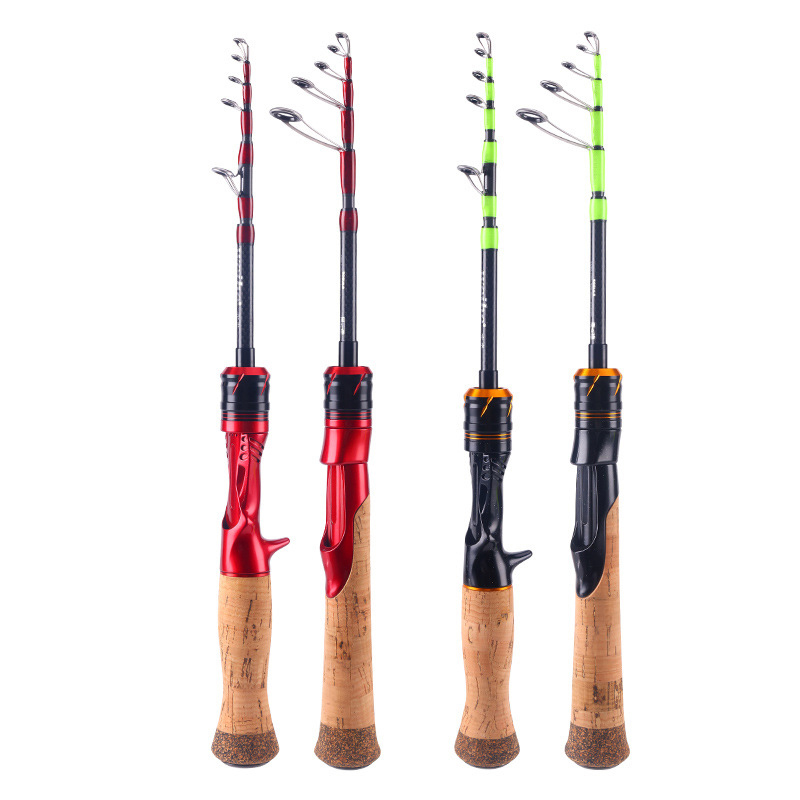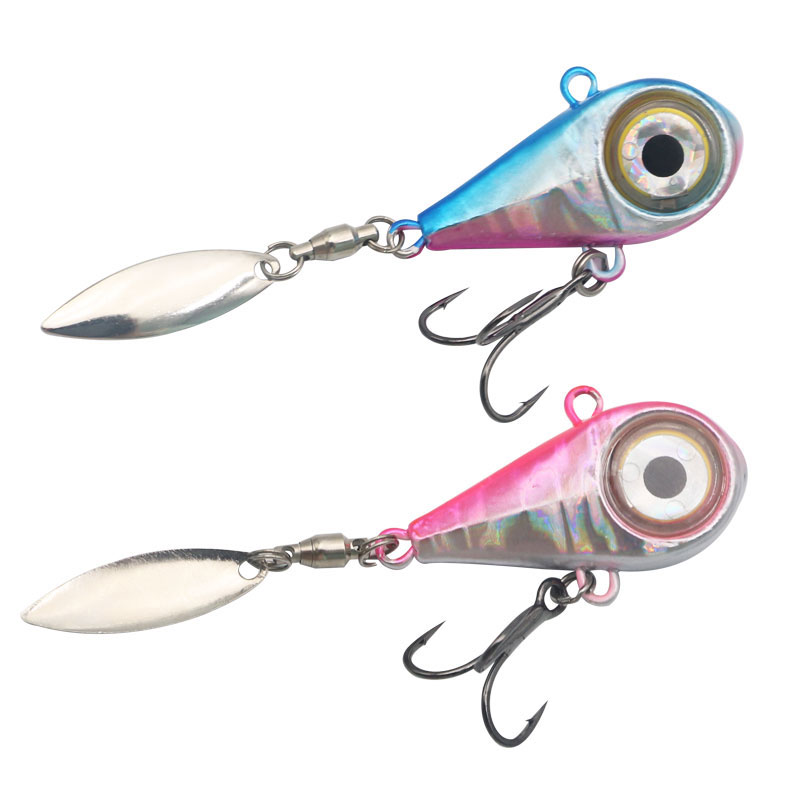Before your lure ever hits the water, success in fishing starts with preparation. Whether you’re heading out for your first cast or refining your seasoned technique, knowing what to bring, how to adapt to your environment, and which gear performs under pressure can be the difference between a frustrating day and a full cooler. When it comes to dependable fishing gear backed by experience and innovation, Laike stands out. With over a decade of manufacturing expertise, Laike offers a wide range of OEM-compatible rods, reels, lines, and lures that meet the demands of both hobbyists and professionals. Their commitment to quality control and global delivery ensures that anglers can rely on their gear—whether casting from a dock or trekking into remote waters.

What Equipment Should You Choose for Your First Cast?
Choosing the right setup is about more than just grabbing any rod off the shelf. It’s about selecting gear that suits your target species, fishing location, and casting style.
Selection of a Versatile and Durable Rod
A good fishing rod is the foundation of your entire angling setup. For beginners or those who fish across multiple conditions, medium action rods offer flexibility. Medium action rods bend in the top half of the pole. They provide good hook-setting capabilities and feedback and allow you to cast decently far.
If portability matters—say you’re hiking into backcountry lakes—a telescopic rod becomes essential. The portable carbon telescopic fishing rod features a 30T carbon cloth body with fast action and ultra-light power (UL), making it ideal for precise casts with light lures (1–7g). Available in spinning or casting styles, this rod balances strength with convenience.

Importance of a Reliable Fishing Line
A strong line prevents heartbreak when you finally hook something worthwhile. Strong Nylon String Fishing Line offers 200 meters of durable stretch-resistant nylon—enough length for most freshwater or saltwater situations.

Recommended equipment: spinning reel or lure reel, medium, medium-hard, and hard-tuned fishing rods, and 6-20 lbs of tensile strength fishing line. That balance between strength and stretch helps absorb sudden pulls without snapping.
Role of Lures in Attracting Target Species
Lures do more than shimmer—they mimic prey behavior. VIB LED fish eye metal spoon bait combines realistic flashing LED eyes with weighted lead construction (20.4g), ideal for deeper water or aggressive species like bass or pike.

The lead hook fishing rig needs to be paired with a soft bait with a large amplitude and exaggerated swimming shape. This movement triggers instinctive strikes from predatory fish.
How Does the Fishing Environment Influence Your Strategy?
Gear alone doesn’t guarantee results. You need to read the water—literally—and adjust tactics based on where you’re fishing.
Understanding Water Conditions and Depth
Clear shallow lakes require finesse; heavy line or noisy lures can spook fish. In contrast, murky rivers may demand brighter colors or vibration-based lures that cut through low visibility. In cold water with super clear water, you need to use a smaller and lighter jig.
Depth also affects lure choice—lighter jigs sink slower but keep you visible longer during descent where many bites occur.
Identifying Local Fish Species and Their Behavior
Different species respond differently to movement speed or bait profile. Trout often prefer slow retrieves near structure; bass might strike aggressively at fast-moving swimbaits.
Swimbaits are applicable to both freshwater and saltwater fishing, and can be used in waters of different depths. Knowing seasonal feeding patterns helps you time casts when fish are most active—typically dawn or dusk during warmer months.
Adapting to Weather and Seasonal Changes
Temperature swings influence everything from baitfish activity to oxygen levels in water layers. On hot days fish may retreat deeper; on overcast mornings they might cruise shallows looking for easy meals.
Wind direction can push baitfish toward shorelines—fish follow them there. Always check barometric pressure too; falling pressure often signals better bite windows.
Why Is Rod Portability an Advantage for Serious Anglers?
When access matters as much as technique, carrying compact gear gives you an edge—especially if you’re chasing remote opportunities off beaten paths.
Benefits of Telescopic Design for Travel and Storage
Bulky rods don’t fit in backpacks or overhead compartments easily. Telescopic rods collapse down without sacrificing performance. The portable carbon telescopic fishing rod fits snugly into travel bags yet extends up to 1.68 meters when deployed—ready for spontaneous casts anywhere from mountain streams to beach piers.
Lightweight Construction with High-Strength Carbon Cloth
Weight matters on long treks—or when casting repeatedly all day long. Material: 30T carbon cloth. This high-strength material reduces fatigue while maintaining sensitivity so you feel every nibble without tiring out by noon.
Application Scenarios for Spinning and Casting Styles
Whether you’re flipping jigs under docks using casting setups or tossing light spoons across open flats with spinning reels—the dual-style options let you match technique to terrain without switching rods entirely mid-trip.
What Makes a Fishing Line Perform Under Pressure?
Line failure ruins trips—and stories about “the one that got away.” Choose wisely based on tension needs, abrasion resistance, and environmental exposure.
Significance of Nylon’s Strength and Stretch Balance
The coating reduces friction on the line, allowing it to move smoothly. Nylon lines offer elasticity that cushions aggressive strikes while resisting breakage—a feature especially useful when targeting species known for thrashing runs like redfish or salmon.
Considerations for Line Length and Diameter
Too thick? Fish see it coming. Too thin? It snaps under tension. A 200-meter spool like that offered by this nylon line gives enough room for trial-and-error adjustments depending on lure weight or target depth zones.
Durability Across Freshwater and Saltwater Conditions
Salt corrodes everything faster—including cheap lines. Look for abrasion resistance if you’re casting around rocks or oyster beds where sharp edges lurk below surface calmness.
How Do Artificial Lures Improve Catch Efficiency?
Live bait has its place—but artificial lures offer versatility that natural options can’t match when conditions change quickly mid-session.
Visual Attraction Through Realistic LED Illumination
Some predators hunt by sight alone—and low light doesn’t stop them if your lure flashes just right. VIB simulation bionic LED fish-eye flash metal spoon bait mimics real prey behavior visually even in dim waters where traditional spoons fail.
Vibration and Movement That Mimic Live Bait
By cleverly shifting the center of gravity, it imitates the escape of small fish and shrimps and thus attracts fish to chase and bite. That erratic motion triggers instinctual strikes from even wary predators who’ve seen every worm in the book already.
Material Weighting for Controlled Casting Distance
Lead-based designs help cast farther against wind resistance while still landing softly enough not to spook nearby schools—a balance live minnows rarely provide unless perfectly hooked (and not dead).
What Preparations Can Prevent Common On-Site Failures?
Even premium gear fails if neglected—or assembled incorrectly before hitting water’s edge.
Assembling Gear with OEM-Compatible Components
Stick with compatible parts when replacing guides or handles post-breakage. OEM-supported products reduce mismatch risks that compromise performance mid-cast—or worse—in battle with trophy catches inches from netting distance.
Pre-Trip Inspection of Rod Guides, Reels, and Lines
The second thing you should pay attention to is the number of guides. Check every guide ring before leaving home; ceramic coatings should be intact without cracks that fray line invisibly until snap-off happens during retrievals. Spin reels should rotate smoothly without grinding sounds indicating internal wear—or worse—gear misalignment under torque stress later on big fights.
Organizing Tackle for Quick Access During Action
It’s not about having everything—it’s about accessing what matters fast when action spikes unexpectedly at sunrise blitzes or tide shifts pulling new feeders into range. Label trays by depth zone or retrieve speed rather than just color coding—it saves seconds when seconds count.
FAQ
Q1: Why choose telescopic rods over traditional ones?
A: Telescopic rods collapse into compact sizes suitable for travel without compromising casting length once extended.
Q2: Are artificial lures effective in murky waters?
A: Yes, especially those with built-in vibration cues or LED illumination which attract attention even in low visibility.
Q3: How often should I replace my nylon line?
A: Replace after each season if exposed heavily to UV light or saltwater conditions, even durable lines degrade over time.




